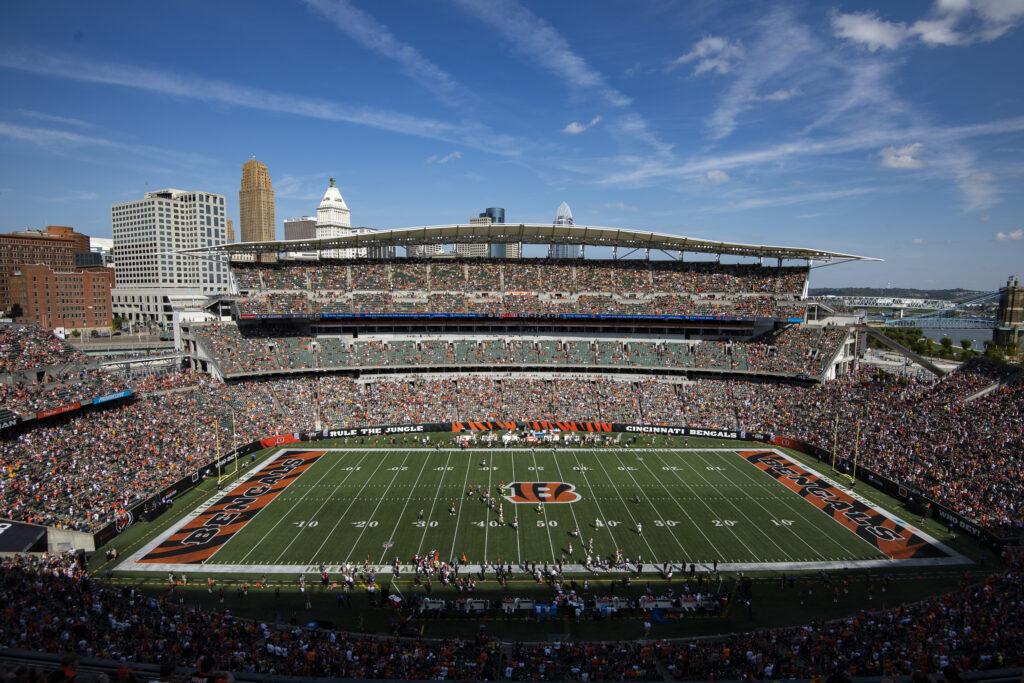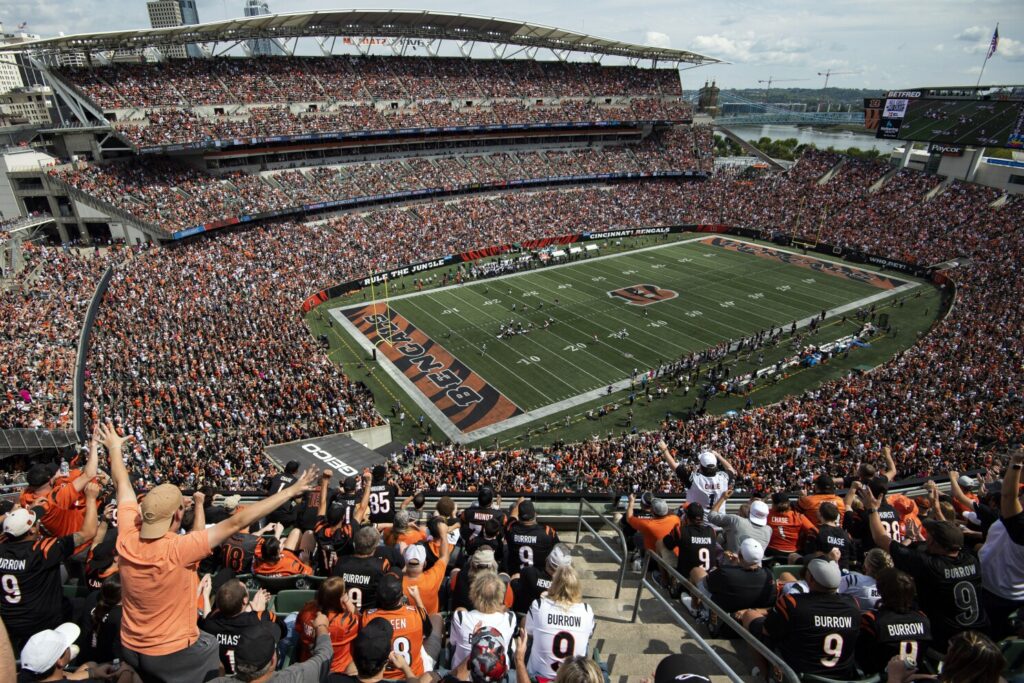The Cincinnati Bengals and Hamilton County have reached a landmark agreement, solidifying an 11-year lease for Paycor Stadium that includes a $470 million renovation plan. This deal not only ensures that the Bengals will call Cincinnati home through 2036, with an option to extend for an additional 10 years, but also reaffirms the franchise’s commitment to its fans and the local community.
The discussions leading to this agreement were lengthy and occasionally contentious. However, the finalized lease marks a significant moment for both the team and the county. Below, we’ll explore the details of the deal, the planned improvements to the stadium, the historical and economic context, and what this means for the Bengals, Hamilton County, and medium- to small-market NFL teams.
A Historic Agreement for Paycor Stadium
The Terms of the Lease
The newly finalized 11-year lease, extending through at least 2036, is a critical milestone for the Bengals. Under the terms of the agreement, Hamilton County will contribute $350 million toward the stadium’s renovation, with the Bengals committing $120 million of their own money. The deal also includes provisions for an additional 10 optional years, which could keep the team rooted in Cincinnati until 2046.
The negotiations required careful compromise. While the original figure proposed by the Bengals for renovations was $830 million, the final arrangement was structured to be more fiscally responsible while still meeting the stadium’s needs. Hamilton County commissioners approved their version of the lease on Thursday. However, Bengals representatives had not reviewed the final draft by that time, requiring overnight negotiations to finalize the terms.
Following approval, Bengals Executive Vice President Katie Blackburn noted the importance of the partnership with Hamilton County, stating, “Today’s deal embodies a responsible approach for the future while at the same time keeping Paycor Stadium a great venue that can provide our great fans the great gameday experience they deserve.”
Contributions and Funding
With Hamilton County shouldering approximately 75% of the financial burden, the deal reflects the economic realities of managing public infrastructure for NFL stadiums. The Bengals’ contribution of $120 million underscores their commitment to maintaining and enhancing the stadium while demonstrating a willingness to share the costs.
There are also plans to seek additional funding from the state of Ohio. Notably, other teams in Ohio, such as the Cleveland Browns, recently secured $600 million from unclaimed state funds to help build a new domed stadium, setting a precedent for utilizing state resources to improve NFL facilities.

Addressing Long-Term Needs
Paycor Stadium, a staple of the Bengals’ identity since its opening in 2000, is undergoing much-needed upgrades to match modern NFL standards. The 25-year-old stadium will benefit from a range of improvements, ensuring it remains a top-tier venue for players and fans alike.
Planned Renovations to Paycor Stadium
The renovation plan is comprehensive, targeting multiple facets of the game-day experience. Upgrades will encompass:
1. Club Lounges and Suites
VIP lounges and stadium suites will be modernized to better compete with facilities in newer stadiums. These enhancements aim to provide premium options for corporate sponsors and high-end ticket holders, generating additional revenue for the franchise.
2. Concessions and Scoreboards
Expanded and upgraded concession areas will offer fans more choices and faster service. Improved scoreboards with cutting-edge technology will heighten the in-game experience, delivering crystal-clear highlights and instant-replay capabilities.
3. Indoor Practice Facility
Among the long-term improvements included in the planning is a permanent indoor practice facility. Cincinnati historically lagged behind other northern NFL teams in this area, only adding an indoor practice bubble in 2022. A permanent facility will provide the team with consistent training conditions regardless of the weather.
These upgrades focus on functionality rather than opulence, in line with Bengals owner Mike Brown’s preference for pragmatic improvements. Brown emphasized that the renovations reflect the needs of a medium- to small-market franchise, stating, “We aren’t looking for fancy new things. We’re going to try to spruce up the club area, improve the concession area, and keep it familiar. We’re staying consistent with who we’re serving.”

The Significance of the Deal
A Win for the Community
This deal is a significant win for Cincinnati and Hamilton County, binding the team to the community and ensuring a steady influx of game-day crowds, media attention, and local revenue until 2036—and potentially well beyond.
Hamilton County Commissioner Stephanie Summerow Dumas celebrated the agreement as “the people’s lease,” reflecting the county’s focus on accountability and mutual benefit for both taxpayers and the team. By achieving a fiscally responsible deal, the county avoided repeating mistakes from the original 1996 lease, which critics argue gave the Bengals disproportionate control over stadium operations.
The upgrades will also create temporary construction jobs and bolster the local economy. More broadly, retaining the Bengals secures Cincinnati as a key player in professional sports, enhancing the city’s national profile.
Historical Context
Paycor Stadium, formerly known as Paul Brown Stadium, has been central to the Bengals’ identity for over two decades. When it opened in 2000, the stadium was hailed as the state-of-the-art home for a dedicated fan base—but by today’s standards, it was in need of a refresh. Furthermore, the original lease, which heavily favored the Bengals, drew criticism for placing undue financial pressure on local taxpayers.
The 2023 sale of stadium naming rights to Paycor, a Cincinnati-based human resources firm, was another step toward modernizing the franchise’s business model while retaining a connection to the local economy.
Keeping Pace with NFL Trends
Across the league, teams in medium- to small-market cities face unique challenges in maintaining competitiveness and profitability. With the NFL’s revenue-sharing model favoring large-market teams, franchises like the Bengals must leverage stadium improvements as key revenue generators.
A renovated Paycor Stadium bolsters the Bengals’ ability to attract patrons, generate sponsorships, and compete with rivals in cities like Cleveland, which is set to undergo a significant stadium overhaul in Brookpark. This keeps Cincinnati in the conversation as a viable and growing NFL market.
Broader Implications for Medium-Market Teams
Although market giants like the Dallas Cowboys and New York Giants command substantial budgets, the Bengals’ renovation deal shows that medium-market teams can implement strategic, cost-effective plans to enhance infrastructure. While they may not have the funds for billion-dollar mega-stadiums, they can focus on gradual updates, prioritizing practical enhancements over luxury.
The trend toward shared responsibility between communities and teams also sets a benchmark for future negotiations. Collaborative funding models, like the one between the Bengals and Hamilton County, balance public investment with private backing, ensuring long-term viability for both teams and their local governments.

What’s Next for the Bengals?
With the renovation deal finalized, the Bengals can now shift focus to the 2025 NFL season and beyond. The team’s recent on-field success, fueled by players like quarterback Joe Burrow, has energized the fan base and attracted national attention.
By investing in the stadium and ensuring a vibrant game-day atmosphere, the Bengals are setting themselves up for sustained success—both on and off the field. Their commitment to staying in Cincinnati strengthens ties to a loyal community of fans, providing a stable foundation for the franchise’s future.
Final Words
The $470 million renovation deal for Paycor Stadium represents a new chapter for the Cincinnati Bengals, Hamilton County, and the broader NFL landscape. It is a testament to the power of collaboration, compromise, and forward-thinking leadership. More importantly, it underscores the significance of sports franchises as cornerstones of their communities—providing not just entertainment, but also identity, pride, and economic vitality.
For Bengals fans, this deal is more than just a renovation—it’s a promise that their team, and the memories created in the heart of Paycor Stadium, will continue to thrive for decades to come.

